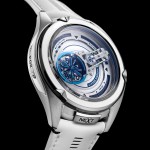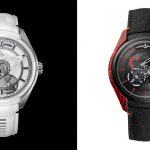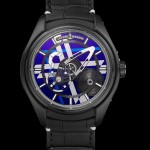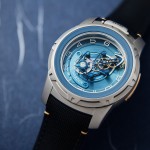Hands On: Ulysse Nardin Freak S Nomad
Freaking cool.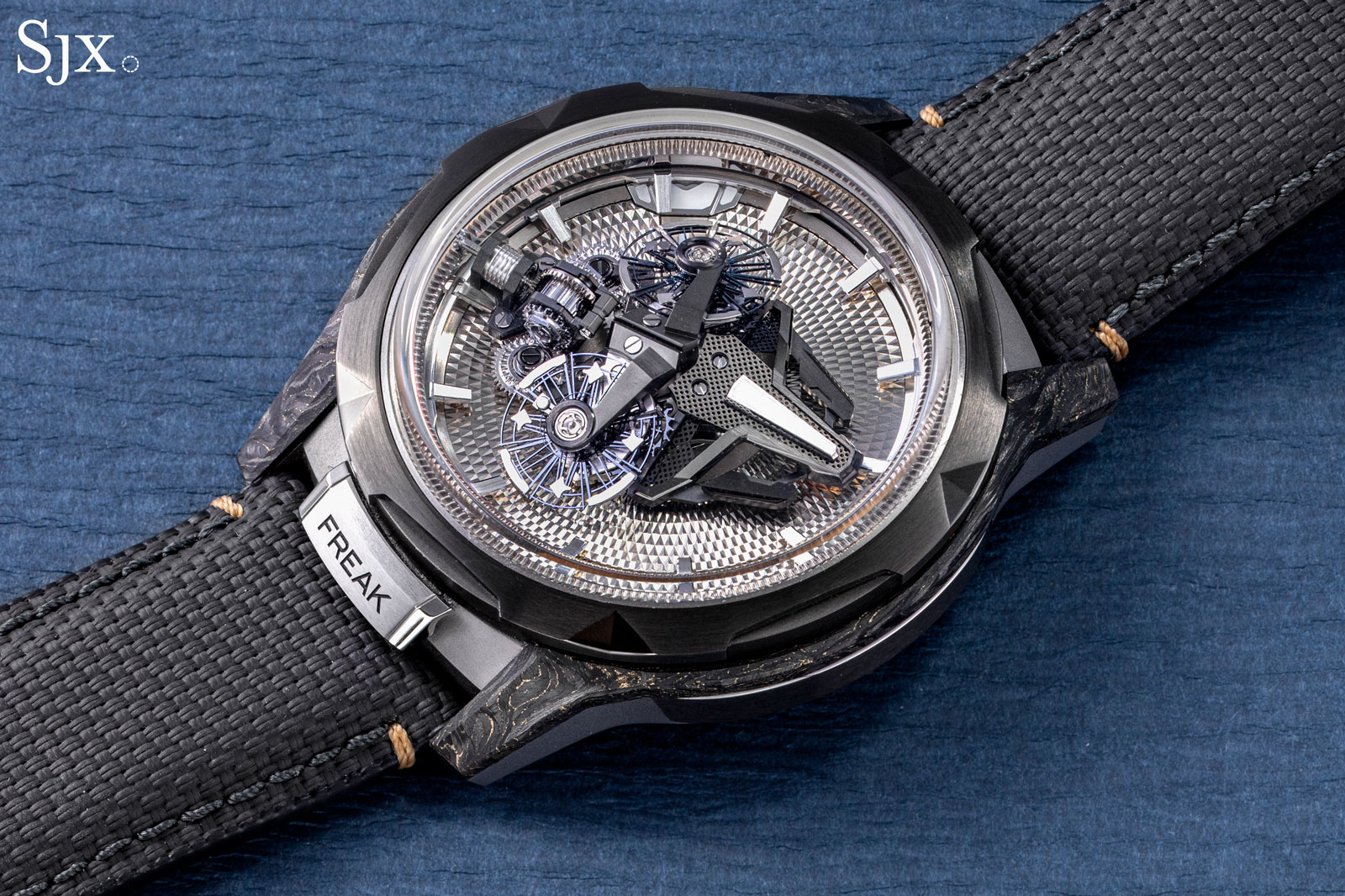
For Ulysse Nardin, Watches & Wonders 2024 was all about the Freak S Nomad, which made its debut in a booth that featured a massive replica of the watch’s movement. While the Nomad is essentially just a new livery for an existing model, the aesthetic changes, which include a rotating guilloche dial, give the watch a sportier feel that suits the design.
The Nomad is the second model in the Freak S collection after the original of 2022, and the latest in a long line of innovative watches that dates back to 2001. Interestingly, the Nomad is the first Freak to feature artisanal decoration, in the form of the guilloche dial, as compared to past models that have been more about technology than technique.
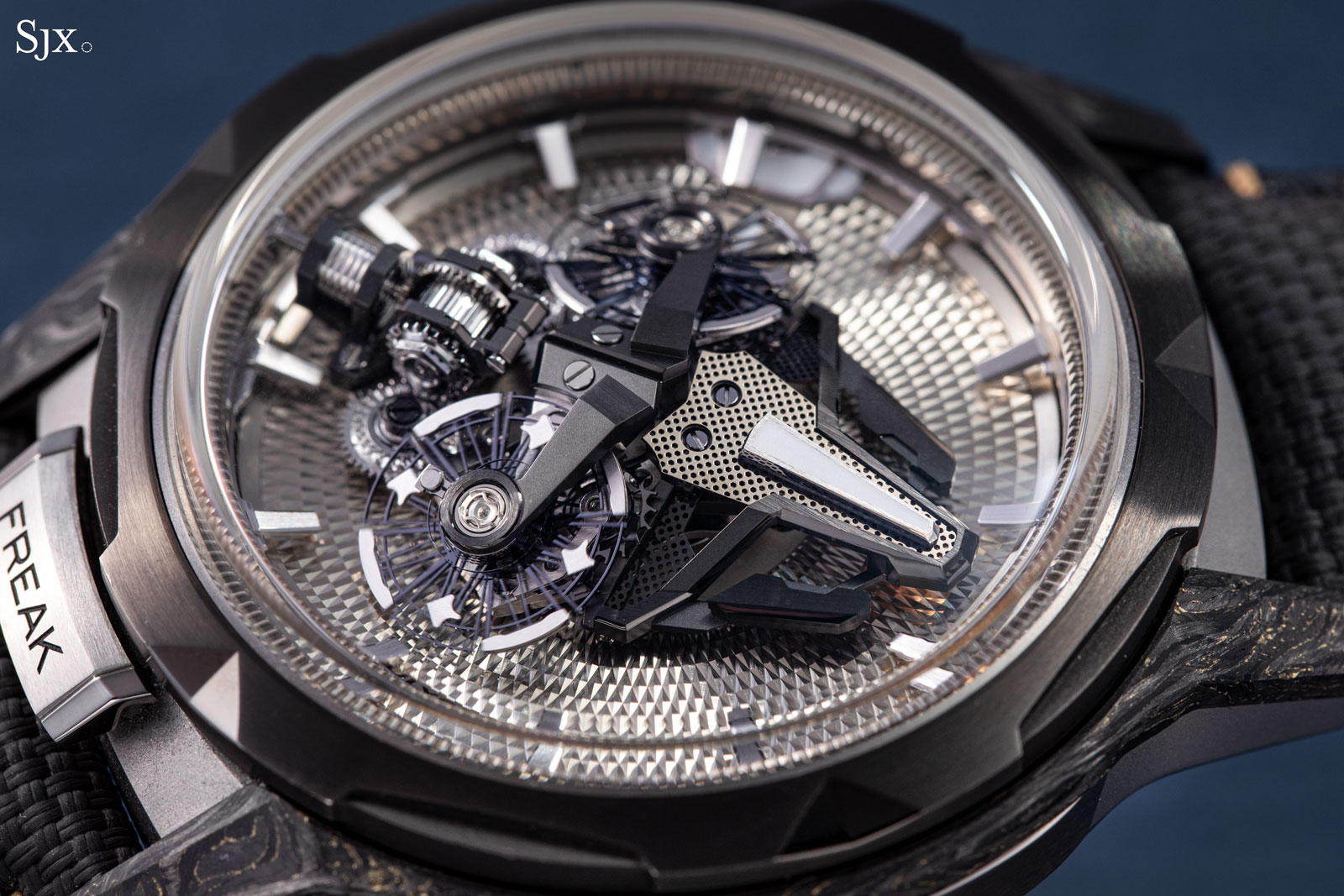
Initial thoughts
Mechanical watchmaking technology is fundamentally archaic, largely unchanged for more than a century. As a result, futuristically styled watches can easily come across as superficial. So it’s refreshing to consider the Nomad, which backs up its sci-fi styling with 21st-century materials and truly unique movement architecture that manages to be highly differentiated even a quarter-century after its launch.
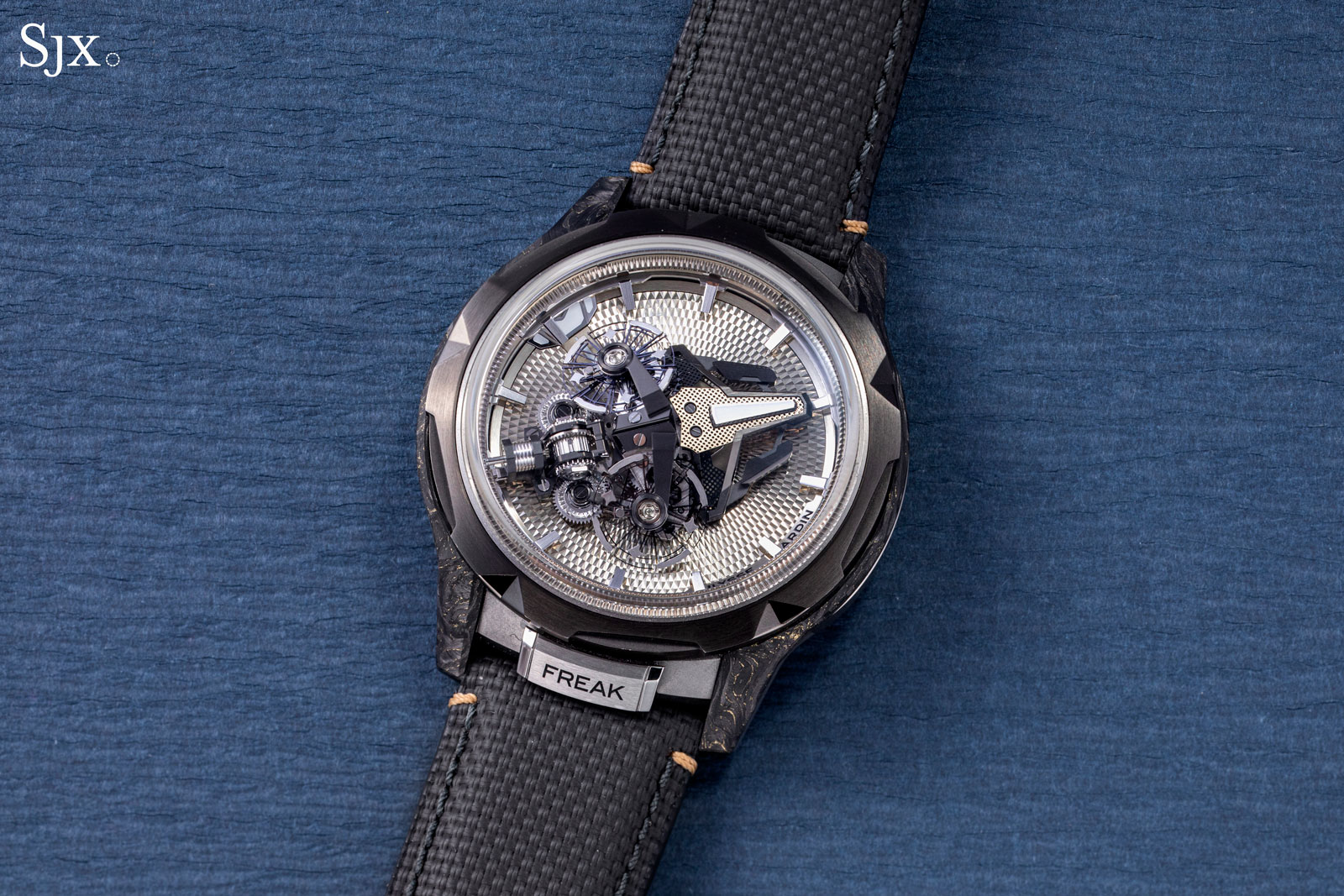
On paper, the Nomad is a large watch at 45 mm in diameter and 17 mm thick. Both of these numbers surprised me because after putting it on my wrist, it looks and feels smaller than it is.
This is due, in part, to the lightweight titanium case, the muted colour palette, and the visual depth of the dial. Furthermore, the eye is naturally drawn to the central carrousel, which draws attention away from the case size.
The case is a mixture of lightweight materials, namely titanium and carbon composite, which are a good match for the nature of the watch, though the carbon composite cladding on the case feels superfluous since it serves no functional purpose. That’s especially so given the complexity of the movement and aesthetics.
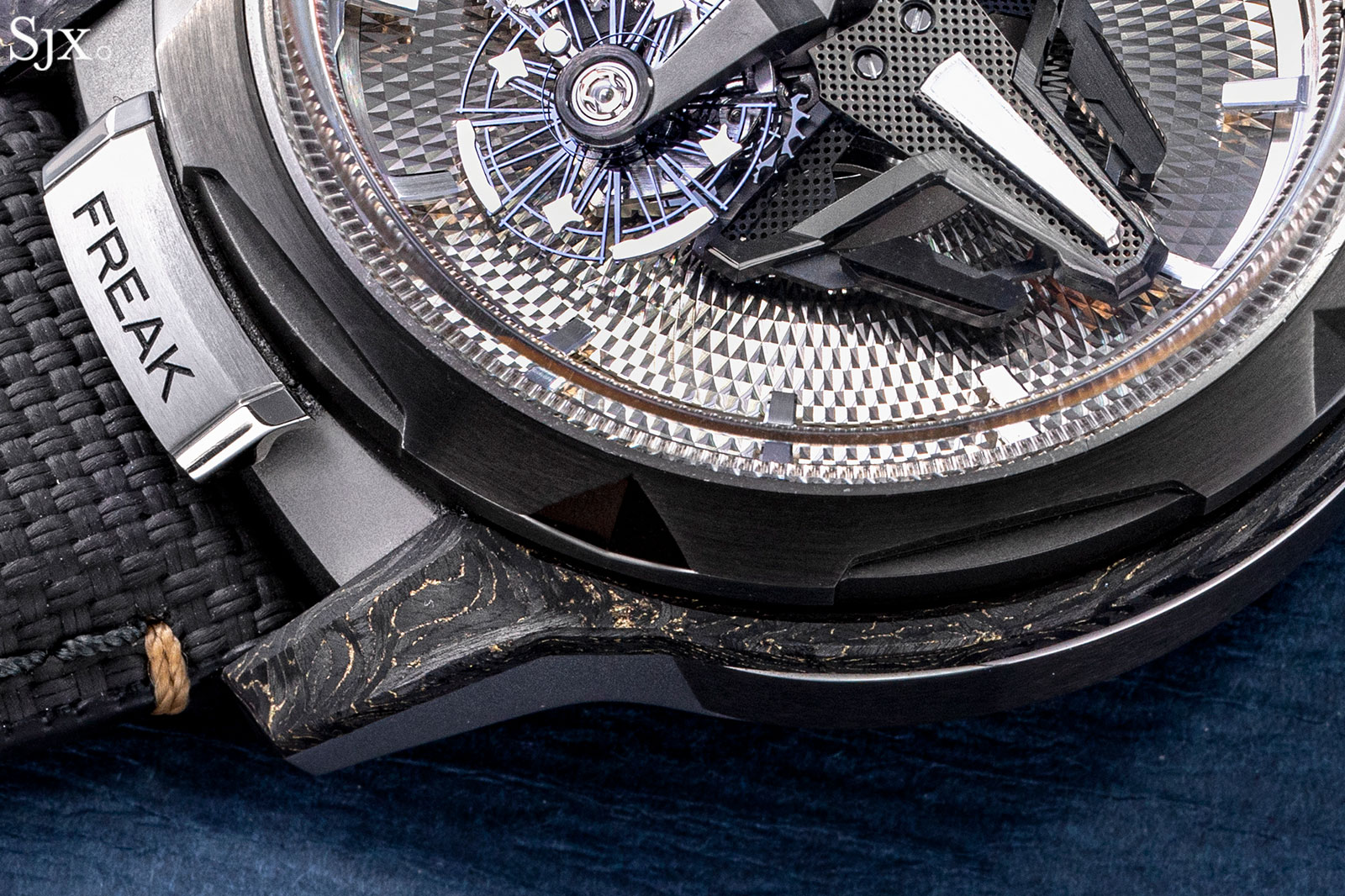
While the design is polarising, there’s no denying the fundamentally intriguing nature of the Freak collection, and of the Nomad specifically. Building on the Freak S design introduced two years ago, the Nomad tones things down in terms of colour, while adding an eye-catching tan CVD-coated guilloche dial made using a traditional rose engine.
Given its technical sophistication, distinctive design, and historically significant model lineage, the Nomad offers a compelling value despite its six-figure price tag. At about US$148,300, the Nomad is technically accomplished yet costs less than most watches with dual-balance systems (that are mostly otherwise conventional in nature), and adds an almost unmatched level of fun to the overall proposition.
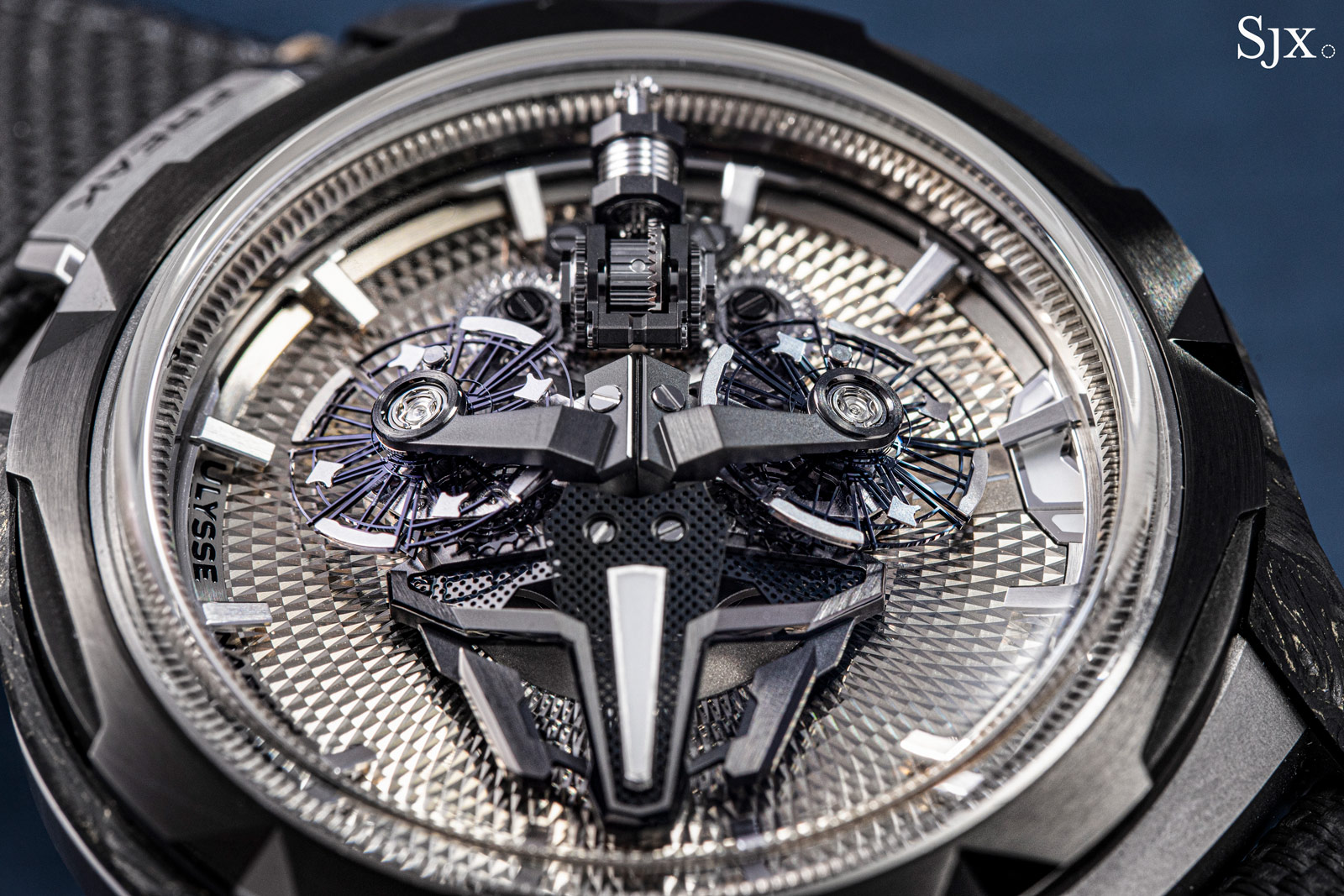
The carrousel immediately draws the eye
Case and dial
As discussed, the Nomad is a large watch that wears smaller than its dimensions suggest. But the size is not gratuitous, as the case volume is filled nearly edge-to-edge by the UN-251 movement, which could hardly be any smaller without sacrificing the visual impact of the carrousel. Overall, this feels like the right size for its design.
From the very first model, the Freak has never had a crown (except for the entry-level Freak X that is not, strictly speaking, a Freak movement). The time is set by lifting the small tab that locks the bezel and rotating the PVD-coated titanium bezel, which is linked to the carrousel. The action of the flange and the feel of the rotating bezel impart a palpable sense of precision, and the crisply machined facets on the bezel are highly tactile and satisfying.
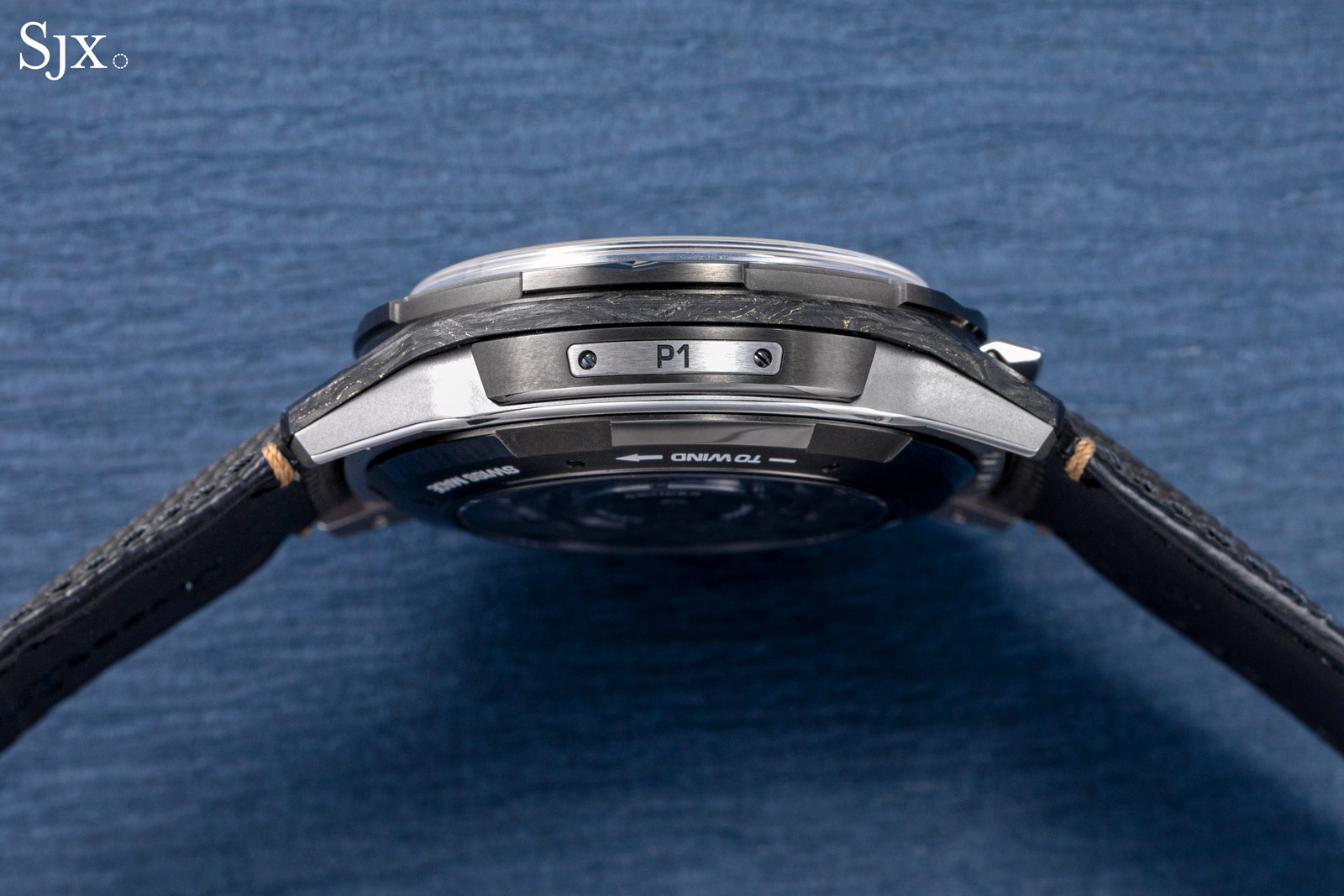
The design helps conceal the 17 mm case height (including the crystal)
The most prominent feature of the dial is, of course, the carrousel, which is styled like a futuristic landing craft. Featuring dual inclined balances and a prominent differential, the carrousel is further dressed up with decorative perforated cladding and a strip of Super-LumiNova that indicates the minutes.
The carrousel, which carries the bulk of the movement components, is also where the much of the finishing is on display. Naturally, traditional techniques like Côtes de Geneve would be out-of-place on a futuristic watch like the Nomad, and many of the bridges are too narrow for lustrous anglage. Instead, we are treated to a mix of matte-finished and straight-grained surfaces, with the borders between these contrasting finishes executed with crisp edges.
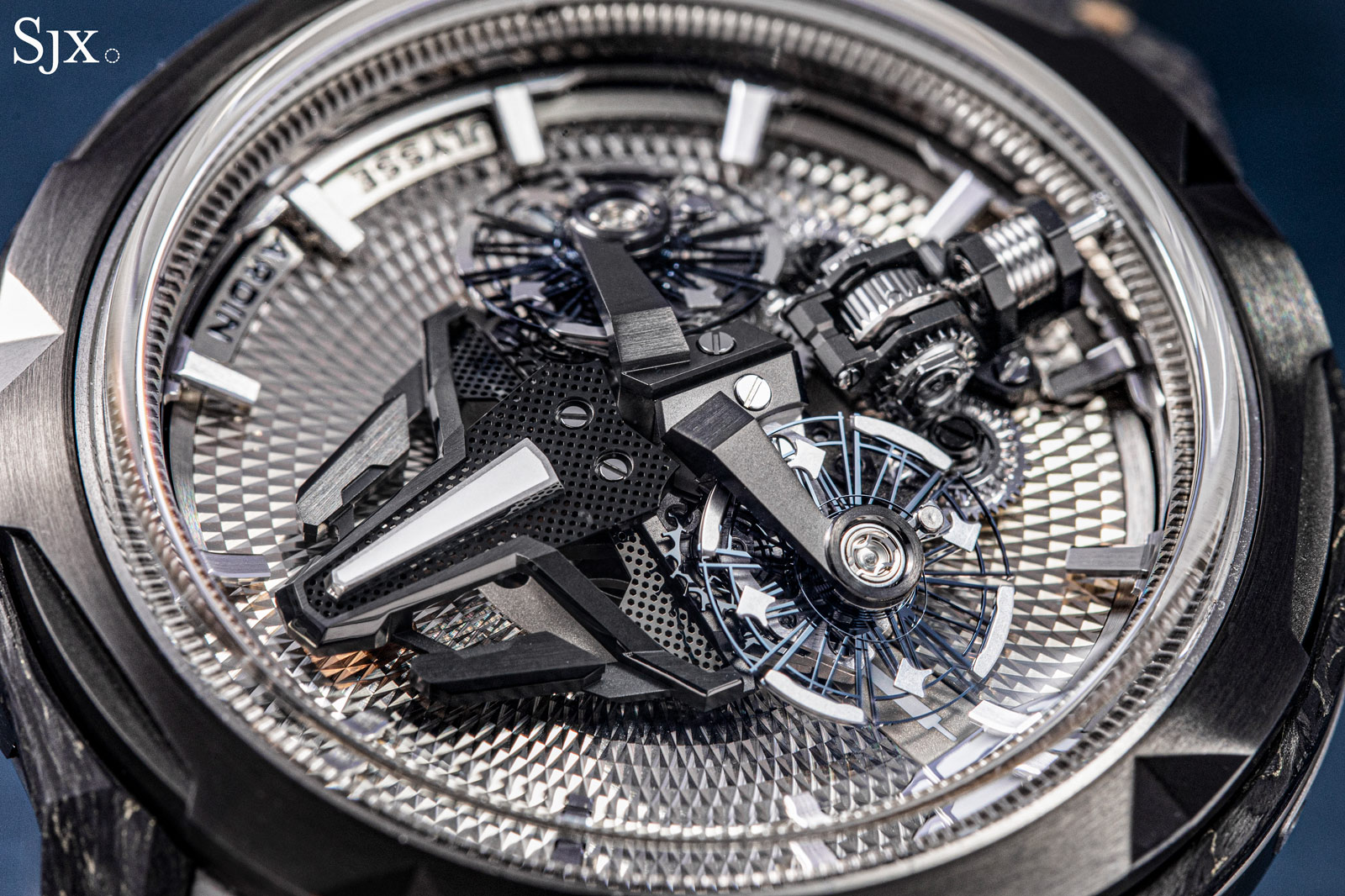
Despite the Nomad’s contemporary aesthetic, traditional craft is still apparent. The guilloche dial plate, for example, is made the old fashioned way, using a hand-operated rose engine. It was made by an independent engine-turning specialist located in the Swiss Jura, where most of the industry’s suppliers are located.
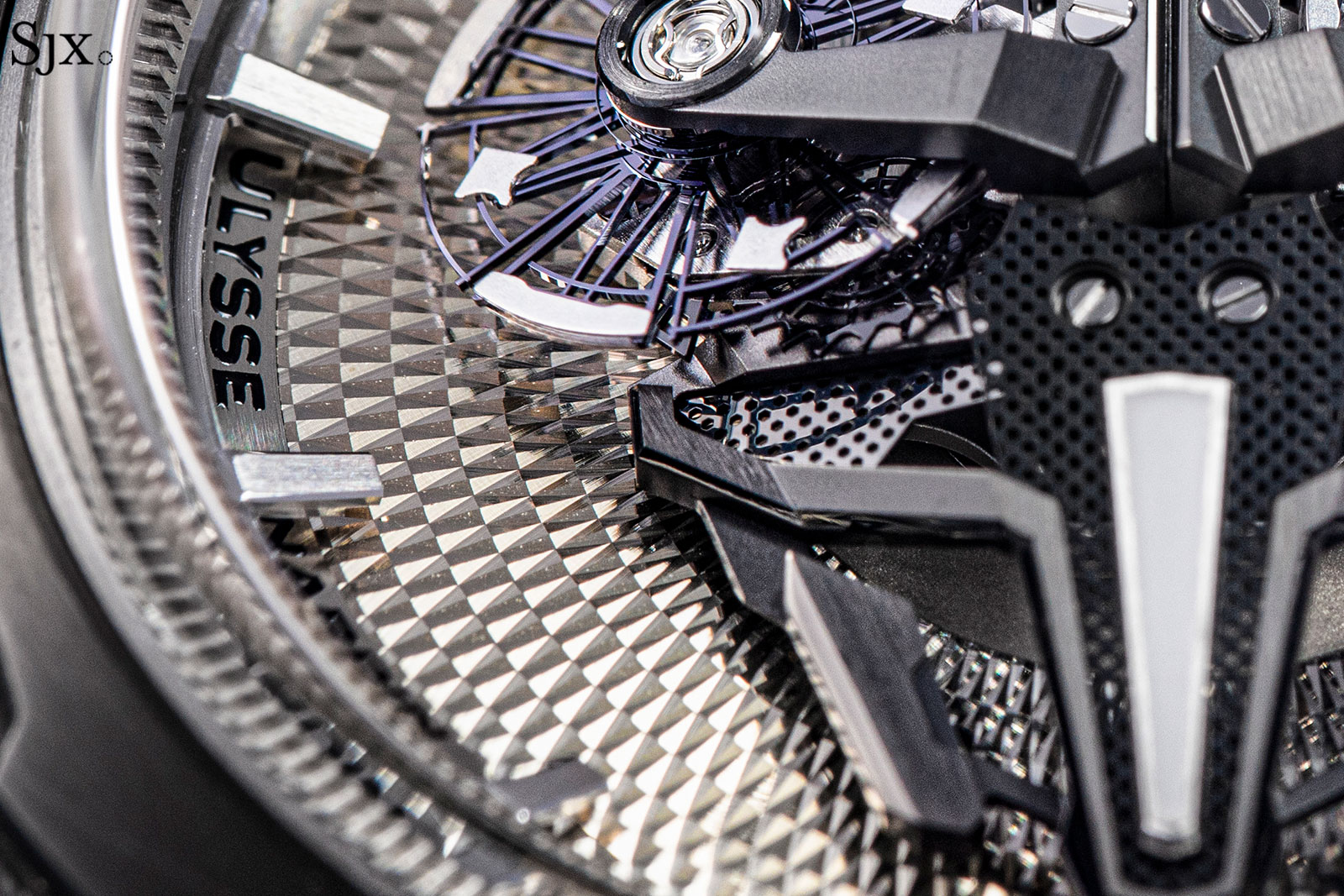
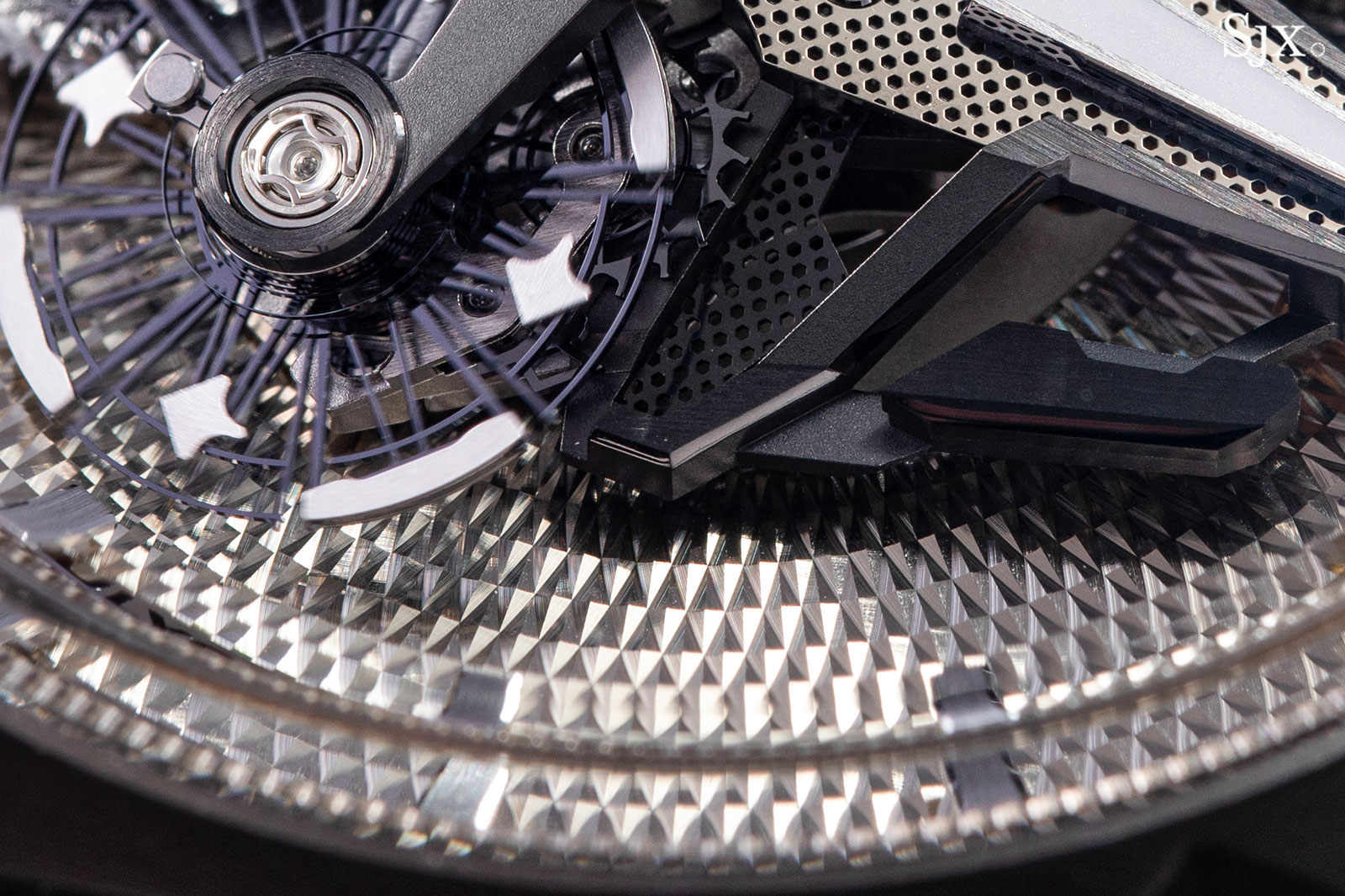
Furthermore, on the carrousel itself, there are no visible traces of machining marks, even at high magnification. One area where this is especially obvious is the mirror-polished flank of the minute pointer, which perfectly reflects the perforated cladding that surrounds it, a detail that suggests traditional hand finishing.
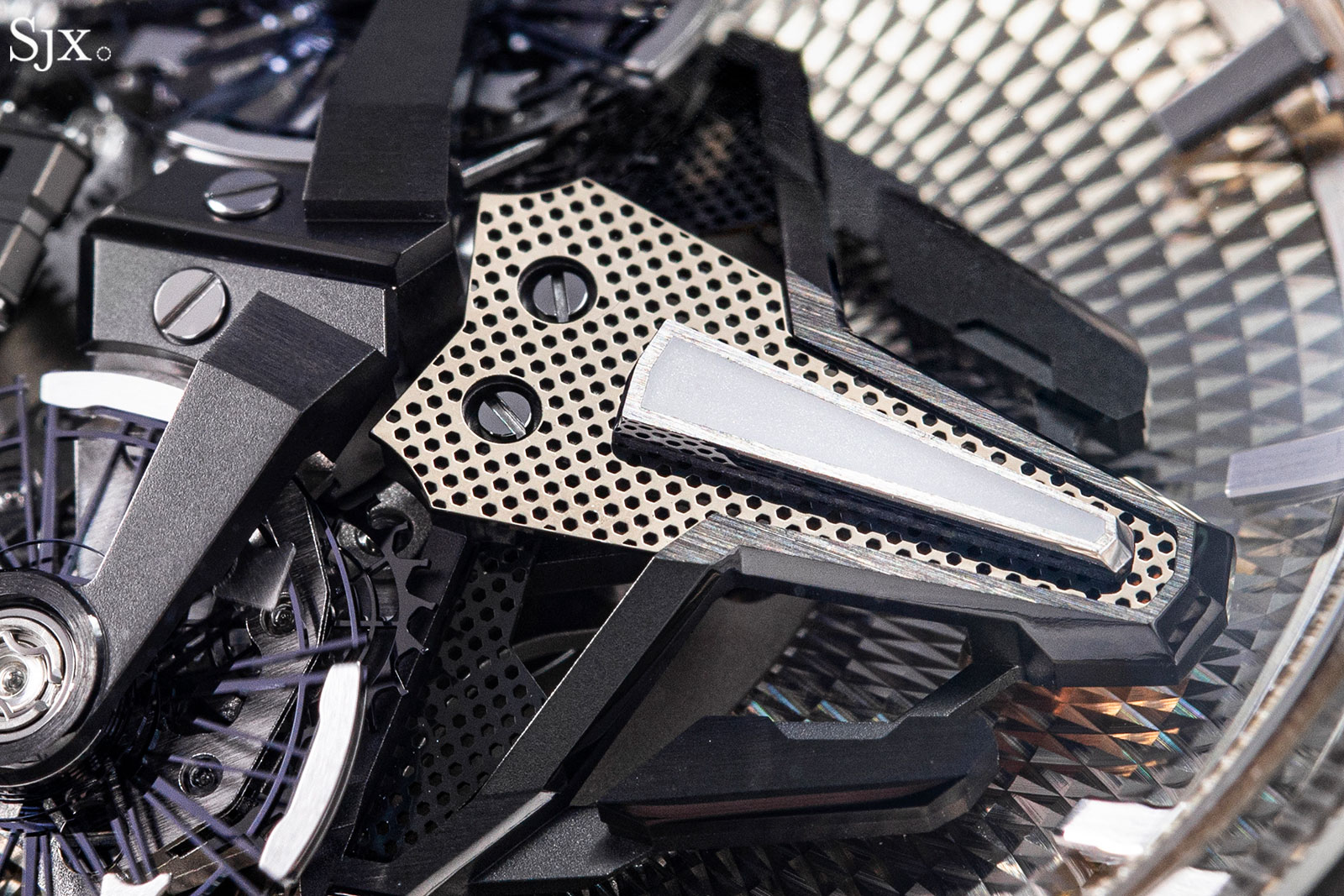
If there’s one thing I’d change about the Nomad, it’s probably the use of carbon composite cladding on the case, which feel unnecessary on a watch that already has a lot going on visually.
That said, the gold-flecked graining of the carbon fibre panels is vaguely evocative of the contour lines on a topographic map, which is consistent with the “nomadic” theme of the watch.
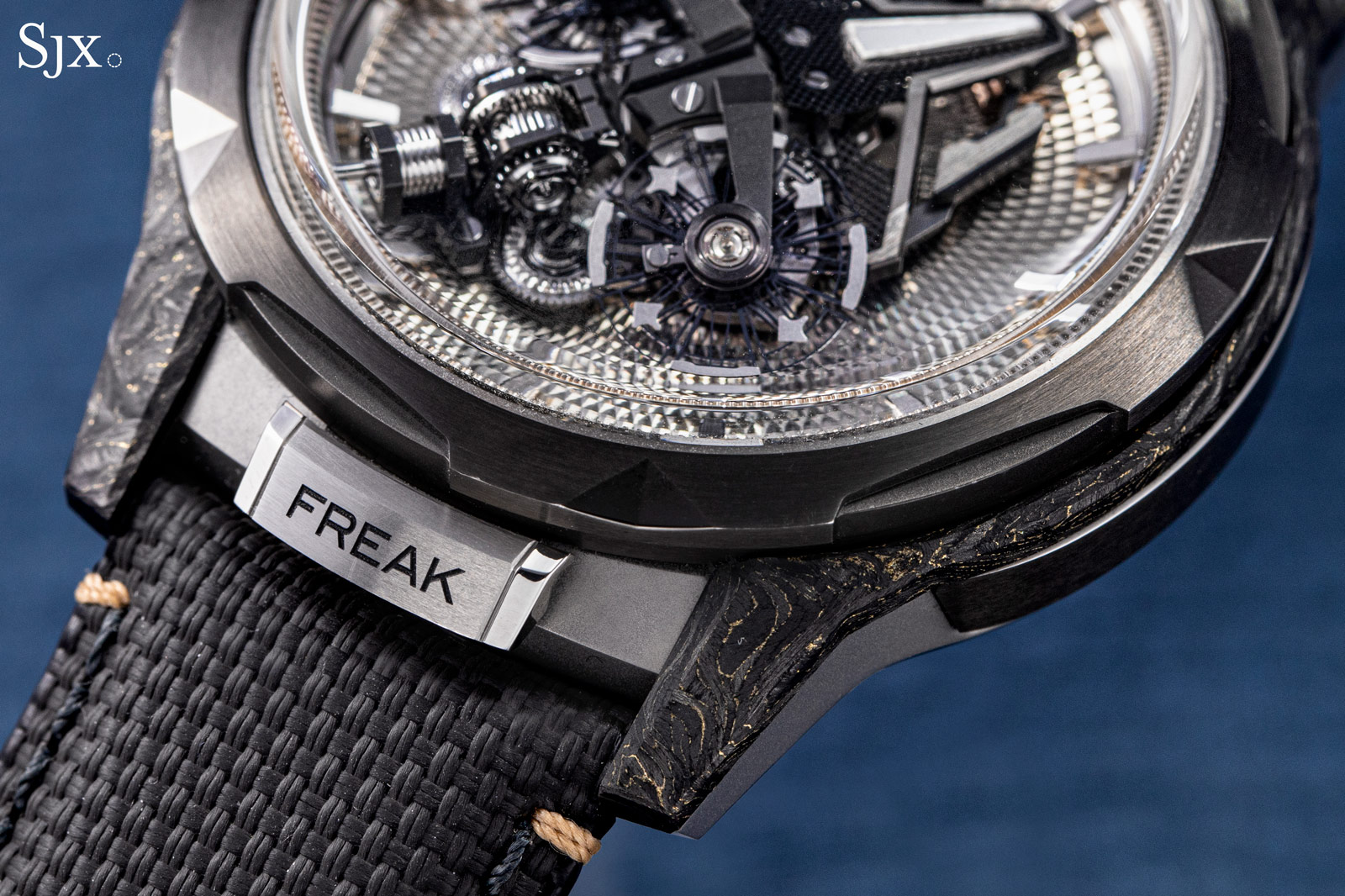
The “Freak” flange at six o’clock flips up to enable time-setting via the bezel. Due to the watch’s symmetrical design, the flange is the almost the only clue to tell the difference between 12 and six.
Making sense of the madness
Despite its visual complexity, and the fact that it looks nothing like a traditional watch, the operation of the UN-251 movement is quite simple. This movement was recently the subject of a detailed technical analysis, which is a good place to start.
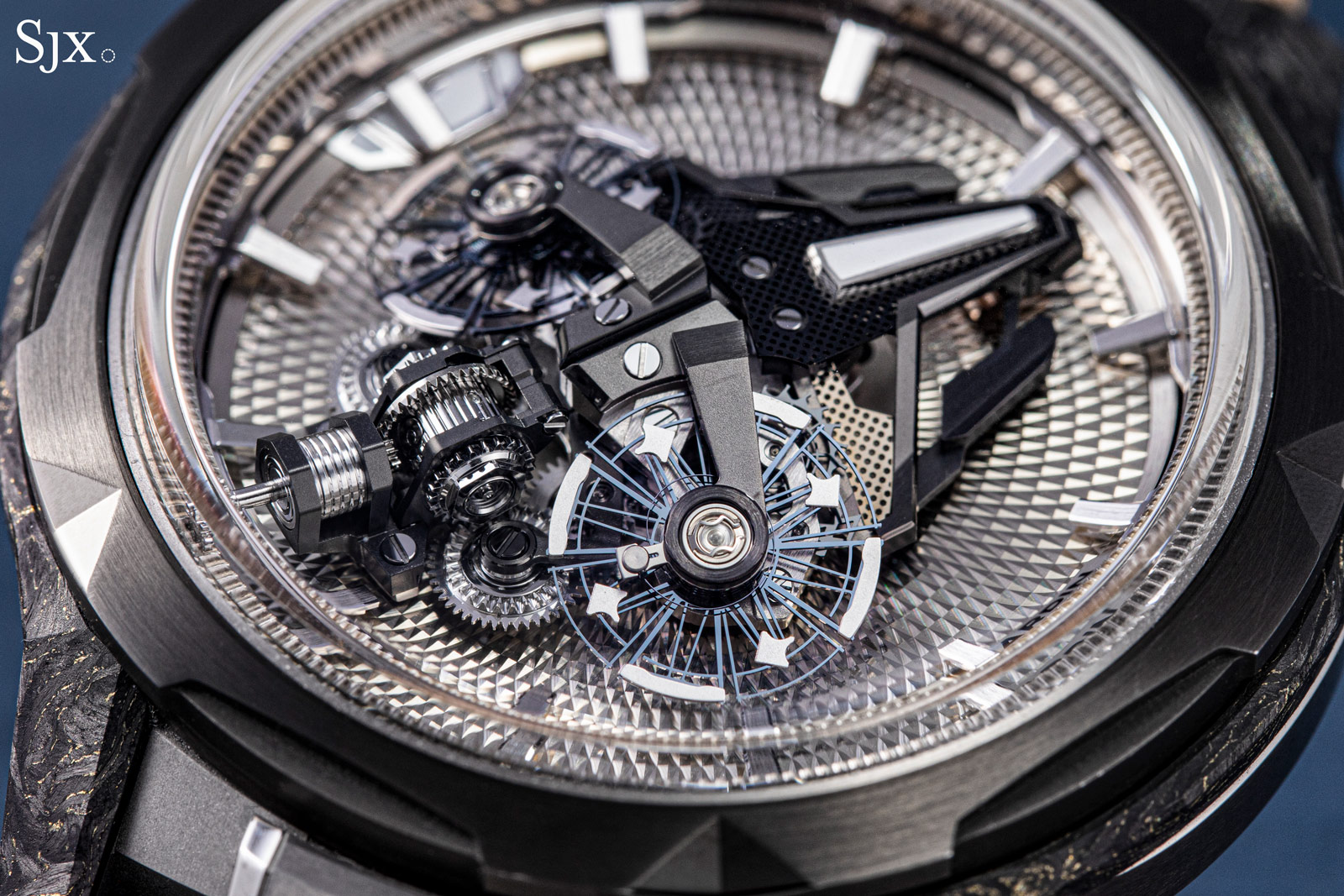
The large silicon balance wheels are possible thanks to recent advances in silicon manufacturing.
The first thing to understand is that the guilloche dial plate is actually the top cover of the mainspring barrel, and the gearing is such that the barrel makes one complete rotation every 12 hours.
This quirk enables the dial plate to pull double duty as the “hour hand,” with a subtle indicator integrated into its edge. This construction means the hour indicator actually passes underneath the hour markers, contributing the three dimensional character of the watch.
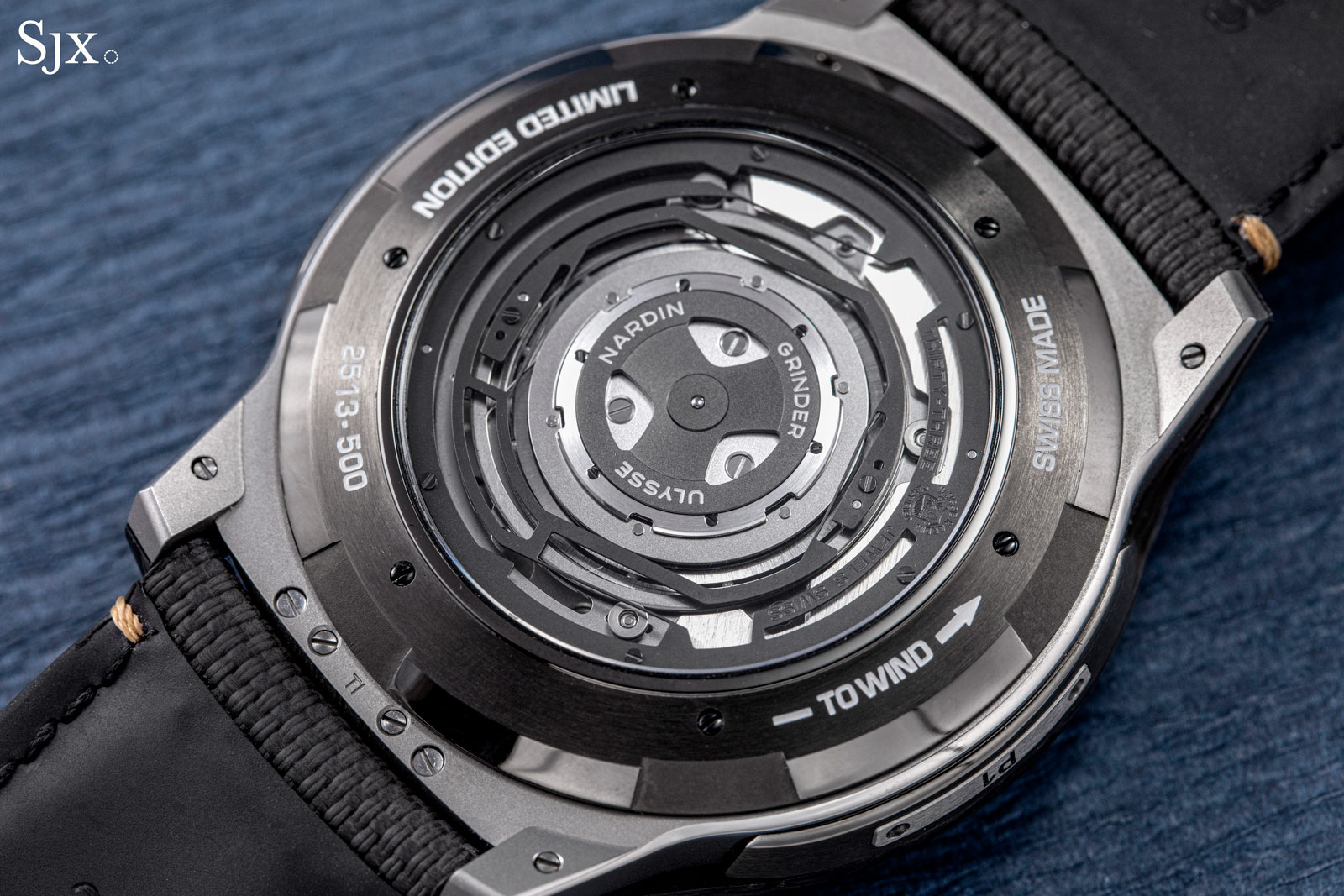
Even the case back looks like nothing else.
Flipping the watch over affords a view of the clever Grinder automatic winding system, which takes its name from the sail winches on racing yachts. Comprised of a peripheral rotor and a central hub with four winding pawls, the Grinder system is said to be twice as efficient as a normal automatic system.
This system is similar in concept to Seiko’s famous Magic Lever, but far more exotic in execution. It relies on compliant pawls that convert the bidirectional movements of the rotor into a unidirectional force that charges the mainspring.
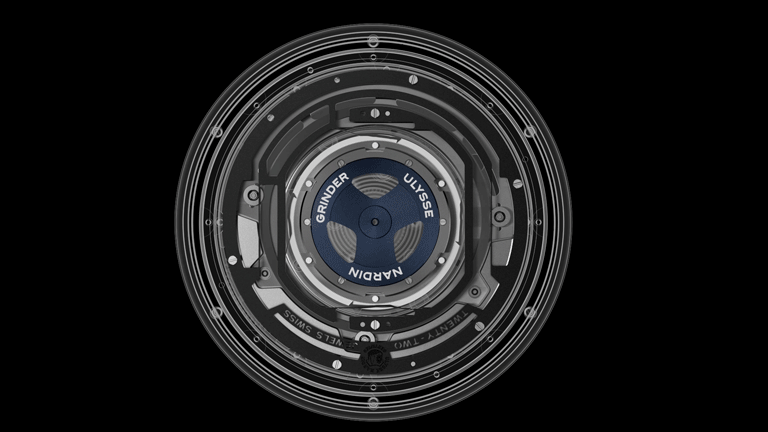
This animation illustrates the function of the Grinder automatic winding system. Image – Ulysse Nardin
The Grinder system winds a large mainspring, which powers the watch for 72 hours. This is a relatively normal number compared to the otherwise extreme specifications, due to the energy consumption of the large carrousel and twin balances. An “ordinary” Freak, on the other hand, has a weeklong power reserve as a result of the lighter movement.
And despite the Nomad’s crown-less design, the watch can also be hand-wound by rotating the case back, though the outstanding efficiency of the Grinder system should minimise the need for hand winding.
On top of this construction sits the carrousel, which contains the escapement. Powered from its centre by the mainspring, the carrousel makes one rotation every hour, enabling it to display the minutes natively.
The speed of its rotation is governed by the escapement, which receives its motive power from a small pinion that meshes with a large fixed-ring gear around the dial. In other words, the spring tension is released bit by bit as the escapement locks and unlocks during each oscillation, allowing the carrousel to slowly walk its way around the dial once per hour.
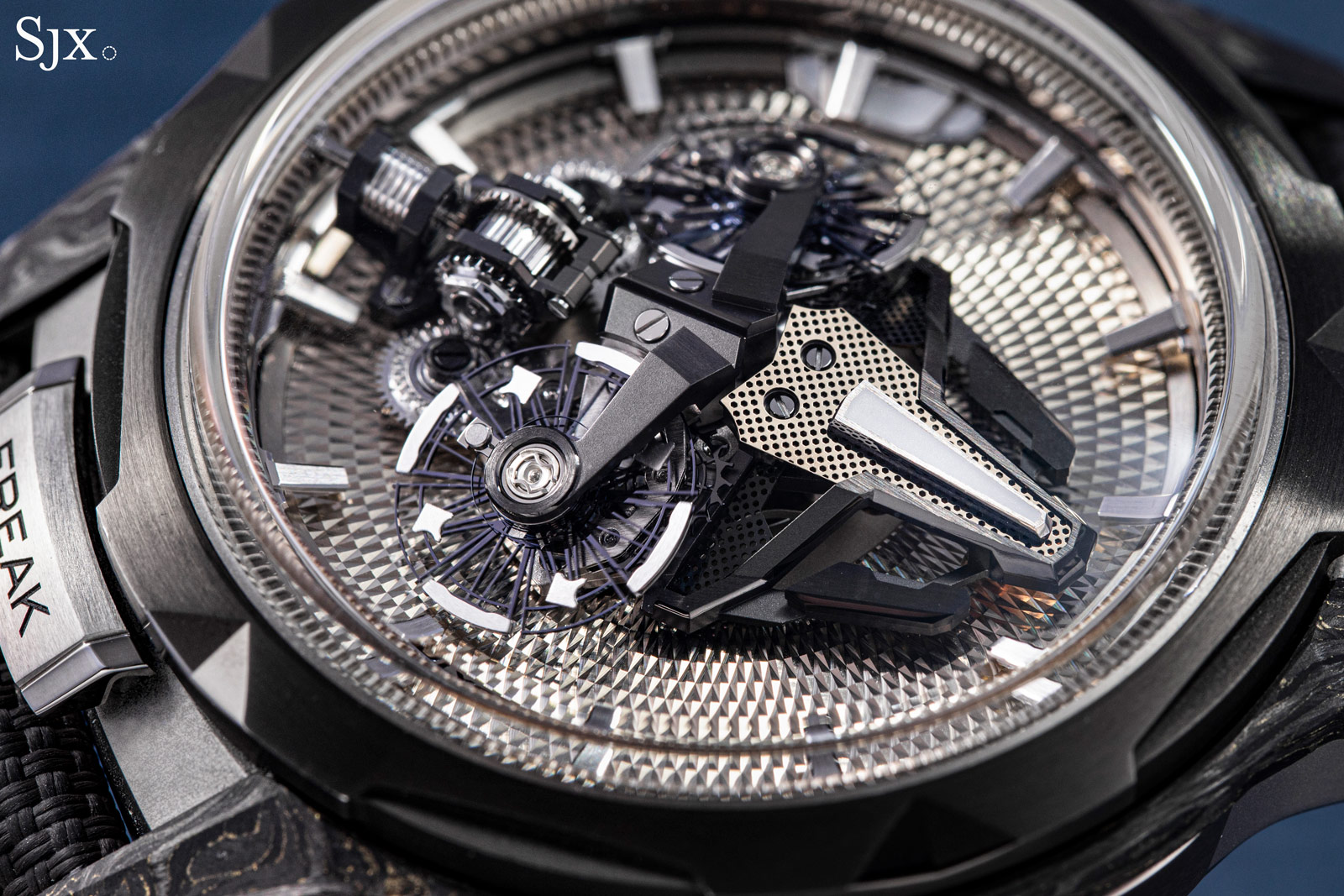
The escapement itself is also noteworthy, featuring two inclined balances linked by a differential, which takes the average rate from the twin balances.
Because the balances are inclined at different angles, and because they are constantly changing position ever so slightly thanks to the rotation of the 60-minute carrousel, the balances are never in the same position as one another. Conceptually, this is likely to make effective use of the differential system and improve the rate compared to a single-balance system.
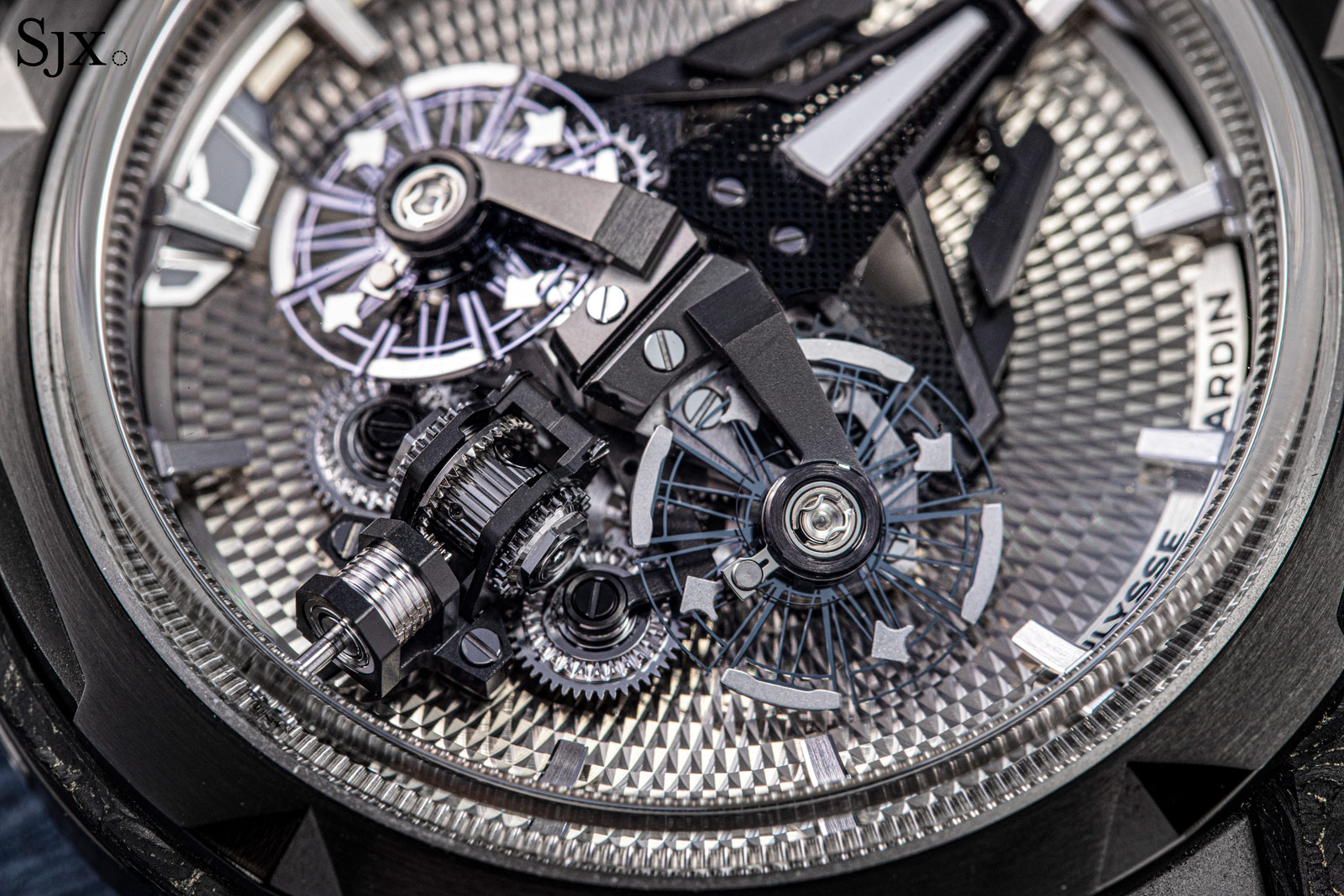
The differential averages the rate from the twin escapements.
In practice, it’s hard to quantity the real-world impact of these solutions. For one thing, there is no seconds hand, and the twin balances complicate the process of acoustic measurement. And while it’s true that simple watches tend to outperform complicated watches in terms of real-world timekeeping, the intellectual coherence of the Nomad’s differential system is a significant part of its appeal and helps differentiate the watch from peers that offer style over substance.
Given the complexity of the system, a special process had to be developed for regulation and adjustment of the twin variable-inertia balances. The first step is regulating each oscillator individually in a test movement with a special tool. Both oscillators are then installed and the fully assembled movement is then tested over the course of a week to ensure the variation is within 0/+10 seconds per day; roughly the same variation as the COSC standard of -4/+6 seconds per day.
Silicon
Of course, the Nomad wouldn’t be a true Freak without some silicium, Ulysse Nardin’s trade name for the thermally stable oxide-coated silicon it developed in collaboration with Centre Suisse d’Electronique et de Microtechnique (CSEM). The brand’s pioneering expertise with silicon was detailed in Part III of The Ulysse Nardin Freak – The Saga of a Scientific Timepiece.
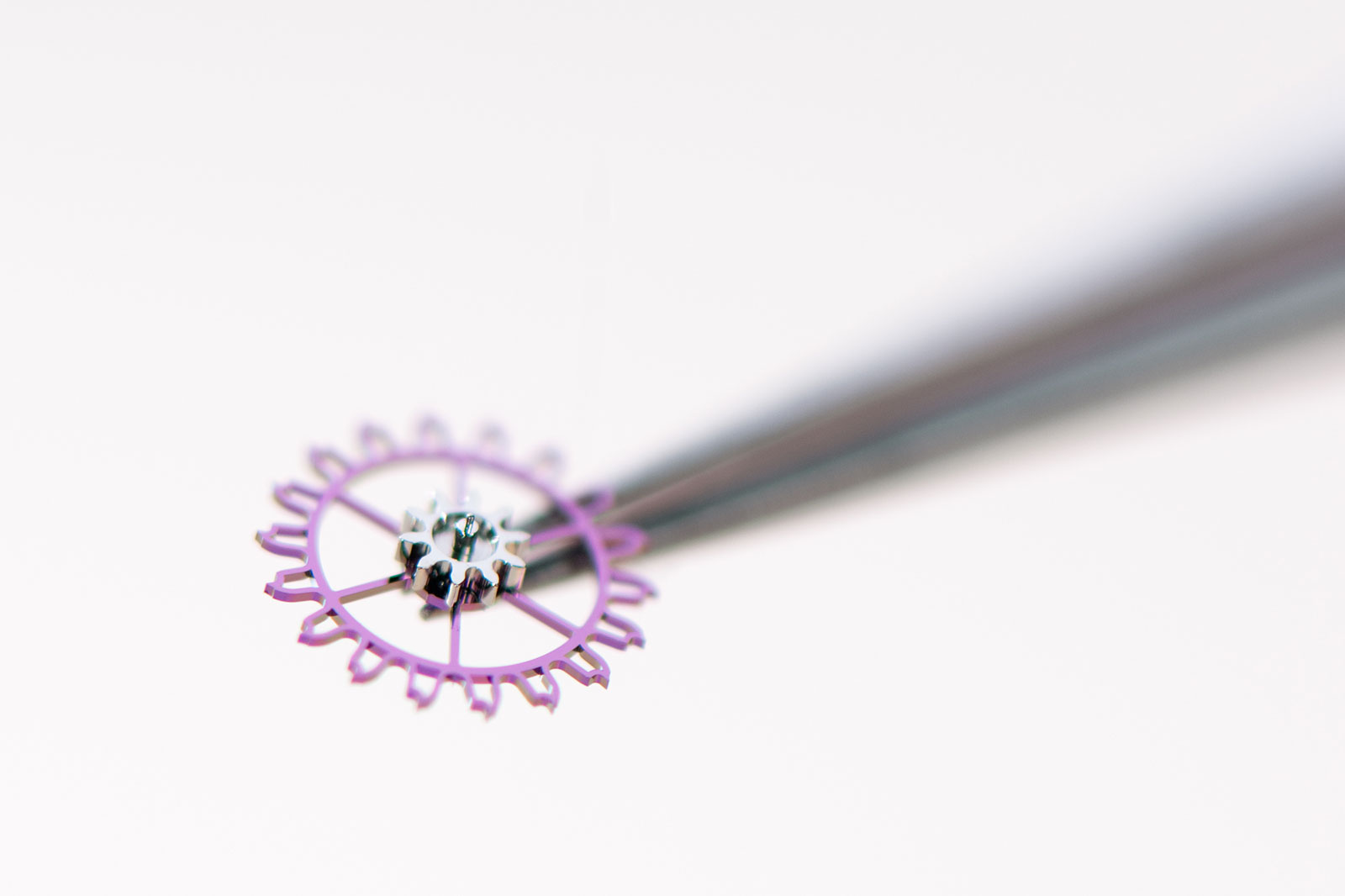
One of a pair of silicon escape wheels from the Dual Ulysse escapement, shown for reference. The Freak S Nomad features a pair of traditional lever escapements.
In short, the original Freak from 2001 was the first watch to utilise silicon components, and Ulysse Nardin remains one of the few brands that can produce its own silicon components quasi-independently, thanks to its ownership stake in Sigatec.
According to the brand’s head of product, Jean-Christophe Sabatier, the composition of the silicon has remained unchanged since its launch in 2001, which is an encouraging sign for silicon skeptics.
Specifically, it’s a pure monocrystalline silicon with an oxide coating that counteracts the effects of temperature variations. But while the material is the same, the production process has improved, enabling the production of a wider variety of components in terms of size, as well as greater precision in tolerances.
Advances in silicon fabrication have opened up new possibilities for terminal curve geometry.
So it should come as no surprise that the Nomad uses silicon liberally, for not only the escape wheel and lever, but also for the hairsprings and balance wheels as well.
The sliding surfaces of the escapement are further coated with a diamond coating known, giving rise to the moniker DIAMonSIL. These diamond-coated silicon parts ensure almost friction-free operation, one of the holy grails of horology.
Almost because while silicon escapements can function without any lubrication, Ulysse Nardin has opted to use a bit of oil for the initial impulse to help accelerate the balance to full amplitude.
The silicon lever.
Closing thoughts
While I tend to be most attracted to traditional designs and movements made with traditional materials, I couldn’t help being seduced by the Nomad when I put it on my wrist, and my appreciation for it has only increased in the intervening time.
The Nomad’s strong technical aesthetic is matched by its innovative movement, which is where most futuristic-looking watches disappoint.
Not only does it feature a dual-balance system linked by a differential and mounted on a 60-minute carrousel, but even fully mature sub-assemblies, like the keyless works and automatic winding system, have been reimagined to enhance the user experience. In other words, there’s nothing else like the Freak.

The Ulysse Nardin booth at Watches & Wonders featured an enormous model of the Nomad, reflected onto a mirrored ceiling. Image – Watches & Wonders
Key facts and price
Ulysse Nardin Freak S Nomad
Ref. 2513-500LE-4A-GUI/3A
Diameter: 45 mm
Height: 16.65 mm
Material: Titanium
Crystal: Sapphire
Water resistance: 30 m
Movement: UN-251
Functions: Hours and minutes
Winding: Automatic
Frequency: 18,000 vibrations per hour (2.5 Hz)
Power reserve: 72 hours
Strap: Anthracite rubber “ballistic” textured strap
Limited edition: 99 pieces
Availability: At Ulysse Nardin boutiques and retailers
Price: US$148,300
For more, visit Ulysse-nardin.com.
This was brought to you in partnership with Ulysse Nardin.
Back to top.

